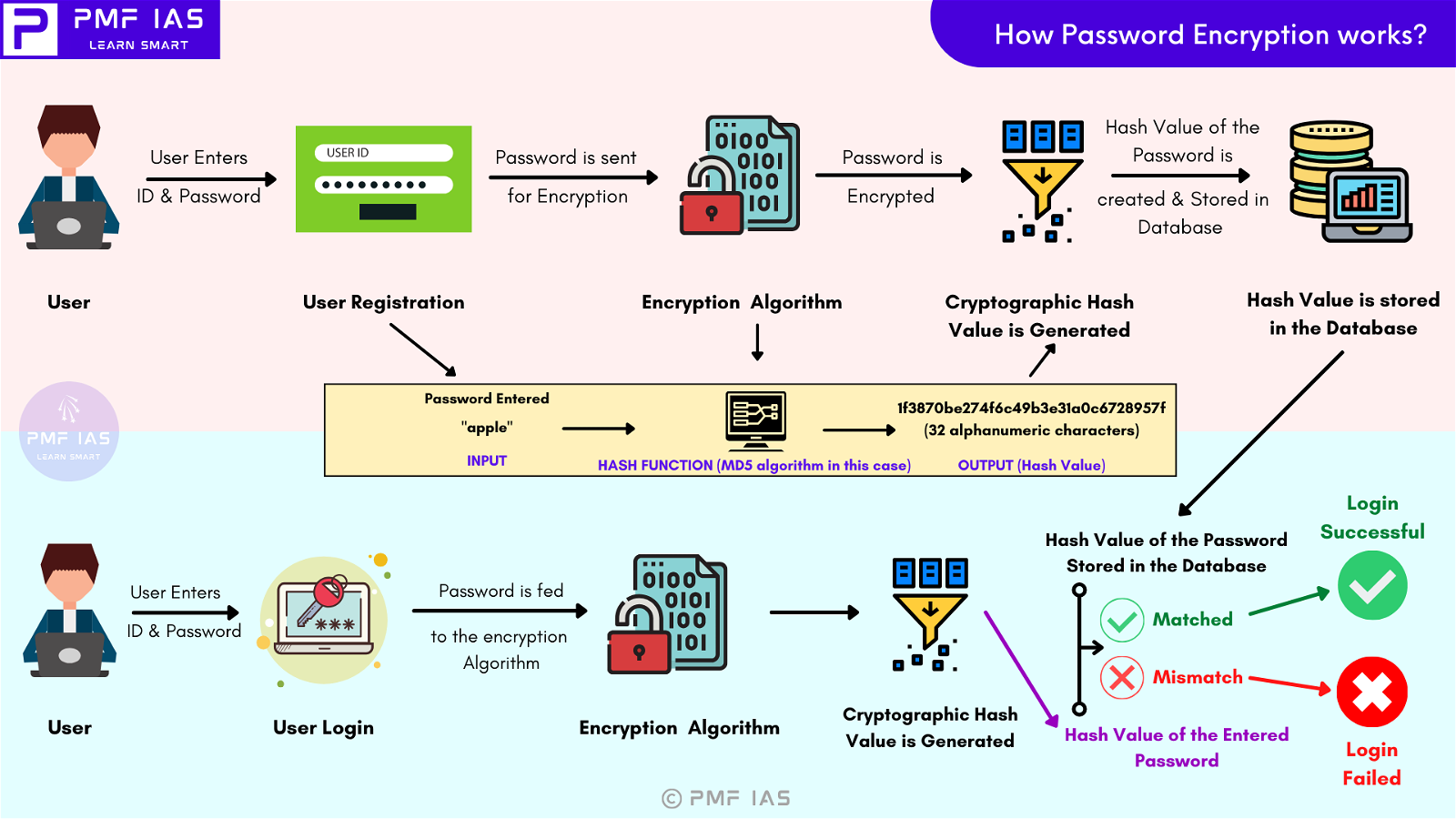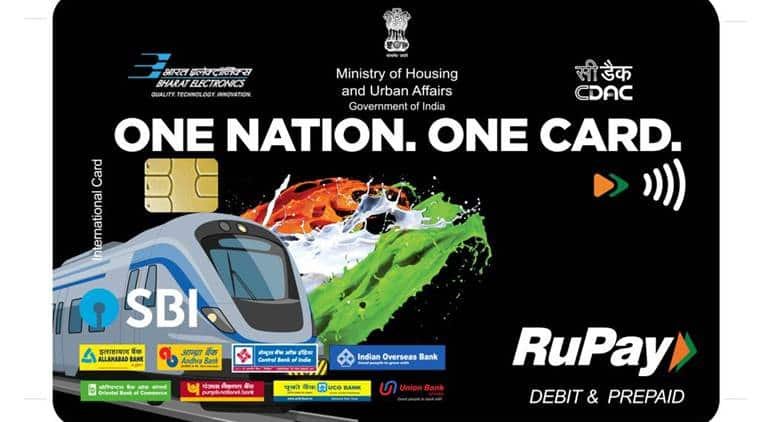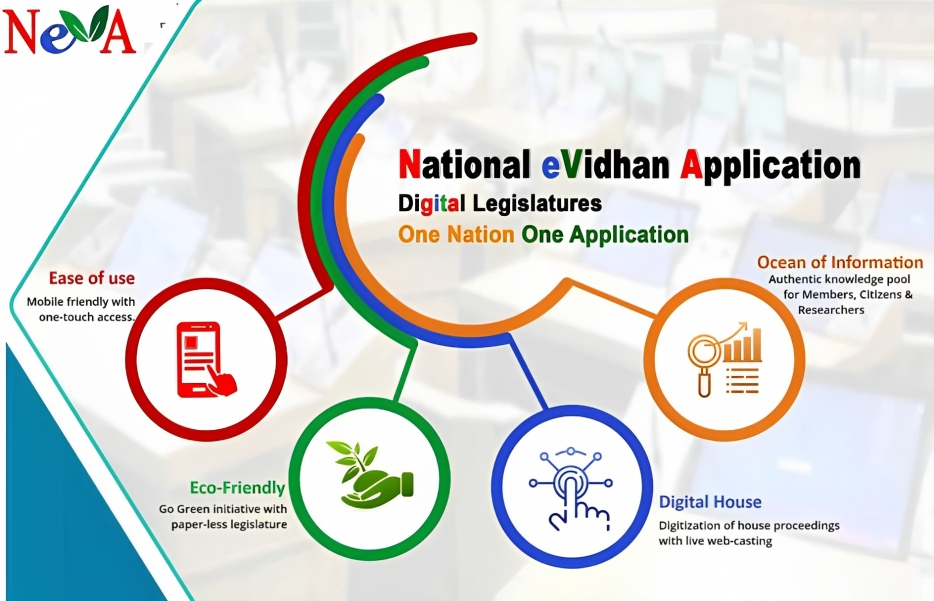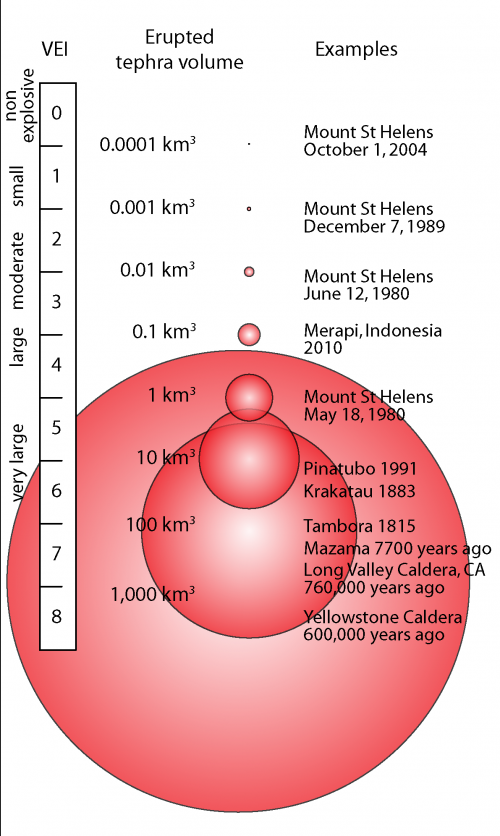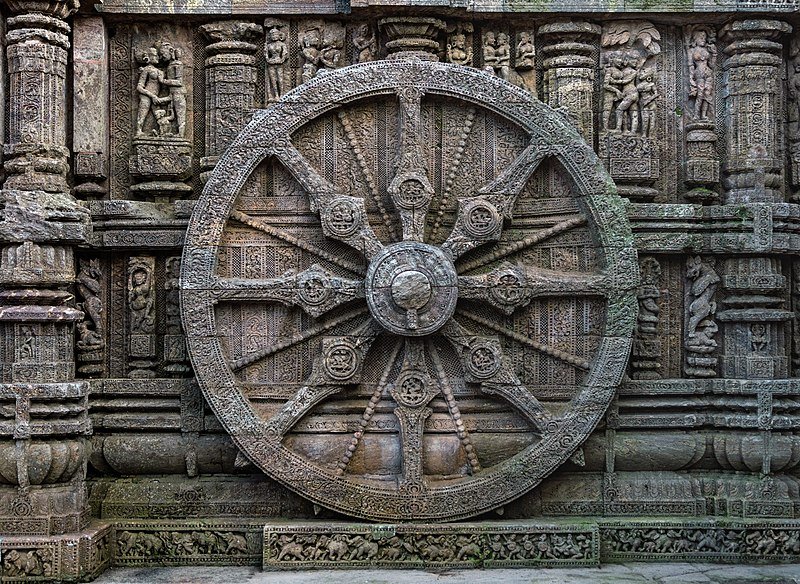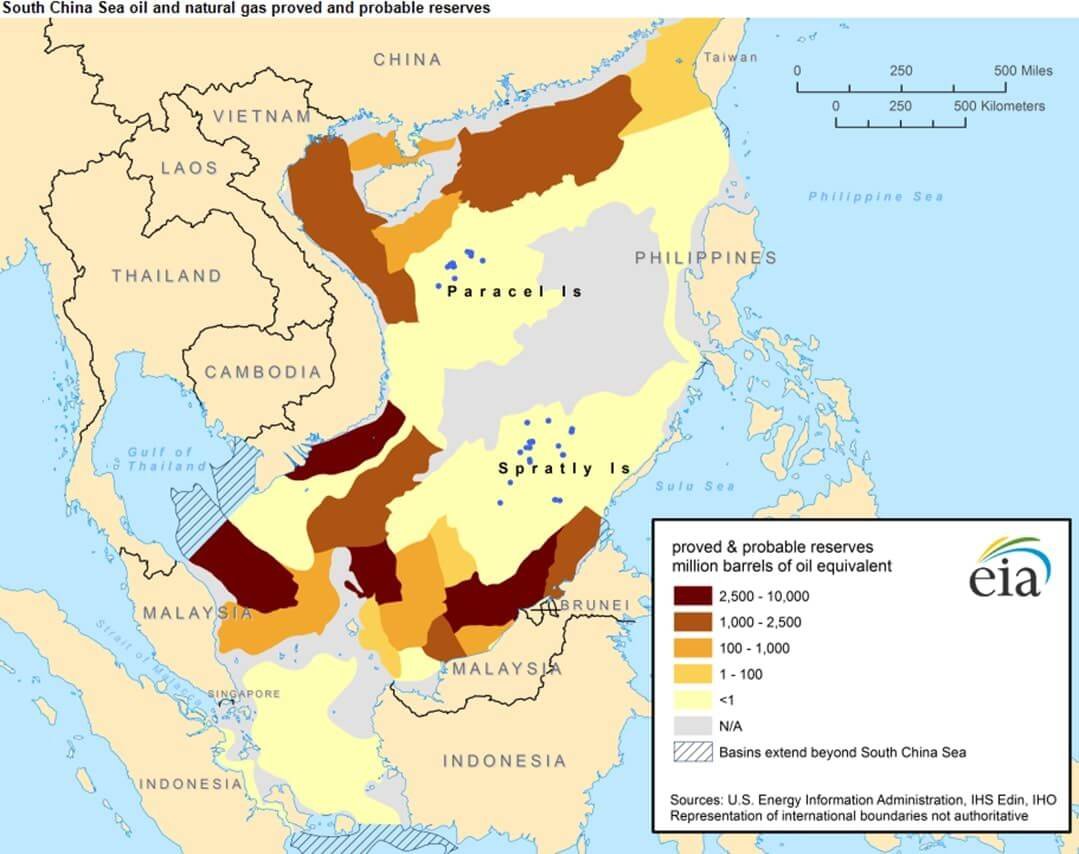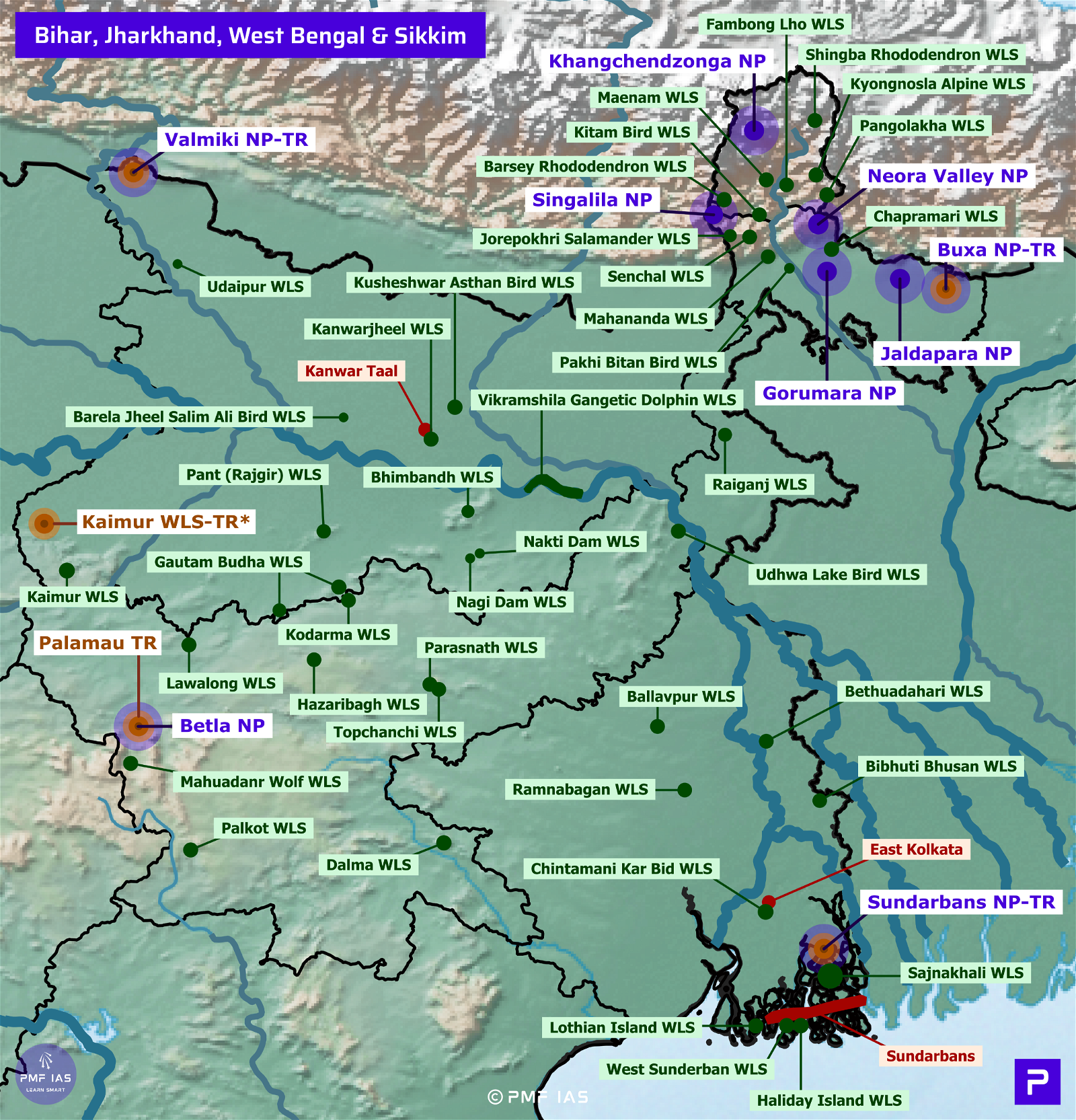
Current Affairs September 01, 2023: Fiscal Deficit, Super Blue Moon, PLI Scheme for IT Hardware, Polyfluoroalkyl Substances, Narayana Guru
Subscribers of "Current Affairs" course can Download Daily Current Affairs in PDF/DOC
Subscribe to Never Miss an Important Update! Assured Discounts on New Products!
Must Join PMF IAS Telegram Channel & PMF IAS History Telegram Channel
{GS1 – Geo – PG} Super Blue Moon
- Super blue moon happens due to the coincidence of two types of full moon.
- Super moon
- Blue moon
|


Super Moon
- Moon revolves around the Earth in an elliptical orbit and it takes 27.3 days to orbit the Earth.
- Each month, the Moon passes through the point closest to Earth (perigee) and the point farthest from Earth (apogee).
- Super moon occurs when the Moon is at the perigee and at the same time it is also a full moon.
- It appears larger, fuller, and brighter than regular full moons.
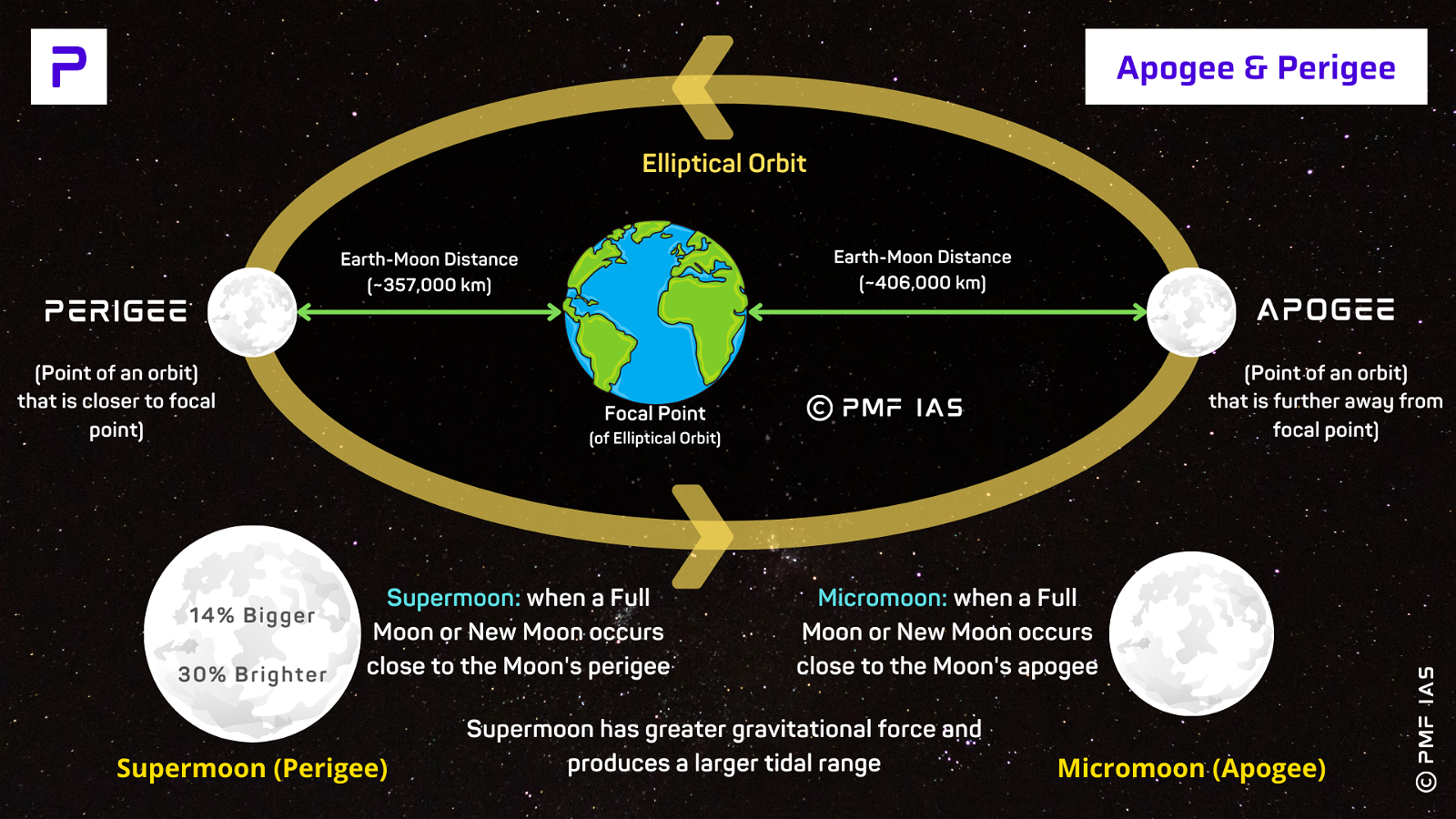
Blue Moon
- Blue moon is the term used for the situation when the full moon is seen twice in a single month.
- During blue moon, the Moon does not appear blue.
|
Why Blue Moon Occurs?
- The duration of Moon’s cycle (i.e., from new moon to new moon) is 29.5 days.
- So, it is just a bit shorter than the average length of a calendar month.
- Eventually this gap results in a full moon happening at the beginning of a month with enough days still remaining for another full cycle and so, a second full moon in the same month.
|
Significance of Super Blue Moon
- Rare event: A blue moon or super moon is a common phenomena whereas, a super blue moon happens once in a decade. The subsequent super blue moon is anticipated in 2037.
- Bigger and brighter: A full moon at perigee (super moon) is about 14% bigger and 30% brighter than a full moon at apogee (micro moon).
{GS1 – MIH – Personalities} Sree Narayana Guru
- Context (PIB): PM Modi has paid tributes to Sree Narayana Guru on his Jayanti.
- Sree Narayana Guru was a social reformer from Kerala born on August 20, 1856.
- He fought against caste-based discrimination and demanded social equality.
- One of his famous statements was: “oru jati, oru matam, oru daivam manushyanu” (One Caste, One Religion, One God for humankind).
- He launched the Aravippuram Movement in 1888.
Aravippuram Movement
- The Ezhavas were the single largest caste group in Kerala constituting 26% of the total population.
- They were considered untouchables and denied education and temple entry.
- Narayana Guru was also from the Ezhava caste.
- To defy religious restrictions, he took a stone from the Neyyar River and installed it as Shivalinga at Aruvippuram on Sivaratri in 1888.
{GS2 – MEITY – Scheme} PLI Scheme for IT Hardware
- Context (IE I MINT I HBL): As part of its renewed Production Linked Incentive (PLI) scheme for IT hardware, the GoI has received applications from 38 entities, including the likes of Asus, Dell, HP, and Foxconn, that want to manufacture laptops, personal computers and servers in India.
- PLI for IT Hardware is under the Ministry of Electronics and Information Technology (MEITY).
|
What is the Production Linked Incentive (PLI) Scheme?

- The PLI Scheme is a policy to promote domestic manufacturing to enhance India’s self-reliance and global competitiveness.
- The scheme provides financial incentives to eligible companies based on their incremental sales of products manufactured in India over a base year.
- The scheme covers 13 key sectors, including electronics, automobiles, pharmaceuticals, textiles, food processing, telecom, solar PV modules and white goods.
- The scheme has a total budgetary outlay of Rs 1.97 lakh crore for a period of five years.

What is PLI Scheme for IT Hardware?
- The PLI scheme for IT Hardware is to encourage domestic manufacturing of laptops, tablets, all-in-one PCs and servers in India.
- The scheme was first announced in 2021 for a period of four years.
- The scheme was revised in May 2023 with an increased budgetary outlay and a tenure of 6 years.
- The average incentive over six years will be about 5% compared with the 2% over four years earlier.
- The scheme will also penalize companies if production lags behind set thresholds, by deducting as much as 10% from the subsidies.
- The scheme is expected to generate incremental production and attract investment.
- The scheme aims to reduce India’s imports of electronic goods, especially from China.
- The scheme will play a key role in achieving the $1 trillion digital economy goal, including $300 billion of electronics manufacturing by 2025-26.

{GS2 – Polity – IC – Election} One Nation One Election
- Context (TH): The Union government has constituted a committee headed by former president Ram Nath Kovind to explore the feasibility of “one nation, one election“.
- The idea of one nation, one election refers to holding simultaneous elections across the country.
- This means that:
- Elections for the Lok Sabha (LS) and all state assemblies across India will be held simultaneously.
- Voters will cast their vote for LS and the state assemblies’ elections on a single day, at the same time (or in a phased manner as the case may be).
|
History of Simultaneous Elections in India
- Lok Sabha and state legislatures went to polls together in 1952 and 1957.
- The synchronised cycle was first broken in Kerala, in July 1959, when the Centre invoked Article 356 of the Constitution to dismiss the Kerala Government.
- At present, assembly elections in Andhra Pradesh, Odisha, Arunachal Pradesh, and Sikkim are held together with Lok Sabha polls.
Idea of Simultaneous Elections
- The idea of simultaneous polls was mooted in the annual report of the Election Commission in 1983.
- The Law Commission’s Report of 1999 and 2018 also supported the simultaneous election.
Arguments in Favour of Simultaneous Elections
- Reduce enormous costs involved in separate elections.
- Boost voter turnout as it will be more convenient for them to cast votes at once.
- Help ruling parties to focus on governance instead of being constantly in election mode.
- Increase efficiency in administration as administrative duties are affected by elections.
- Reduce the negative impact on governance due to the Model Code of Conduct.
|
Arguments Against Simultaneous Elections
- It will affect voter behaviour and benefit the dominant national party at the cost of regional players.
|
- Reduce the government’s accountability to the people as elections will be held once in five years.
- Repeated elections keep legislators on their toes and increase accountability.
- Regional parties may not compete with national parties in terms of election expenditure and election strategy.
- Complications would arise:
- If any of the governments were to collapse before completing its term.
- If the Parliament dissolves before its five-year term.
- When an election in a State is postponed until the synchronised phase, President’s rule will have to be imposed in the interim period. This will be a blow to democracy and federalism.
- If elections are to be held simultaneously, the state government cannot dissolve its assembly and call for fresh elections which is against Political autonomy.
Need for Constitutional Amendment to Conduct Simultaneous Elections
- Simultaneous elections could not be held within the existing framework of the Constitution.
- It would require constitutional amendment. Such a constitutional amendment would require ratification of at least 50% of the states.
- The Representation of the People Act and other parliamentary procedures will also be required to be amended.
{GS3 – Envi – Pollutant} Polyfluoroalkyl Substances (PFAs)
- Context (TOI): Paper straws, considered environmental friendly, have more PFAs than plastic ones. PFAs are used in paper straws to make them water-repellent.
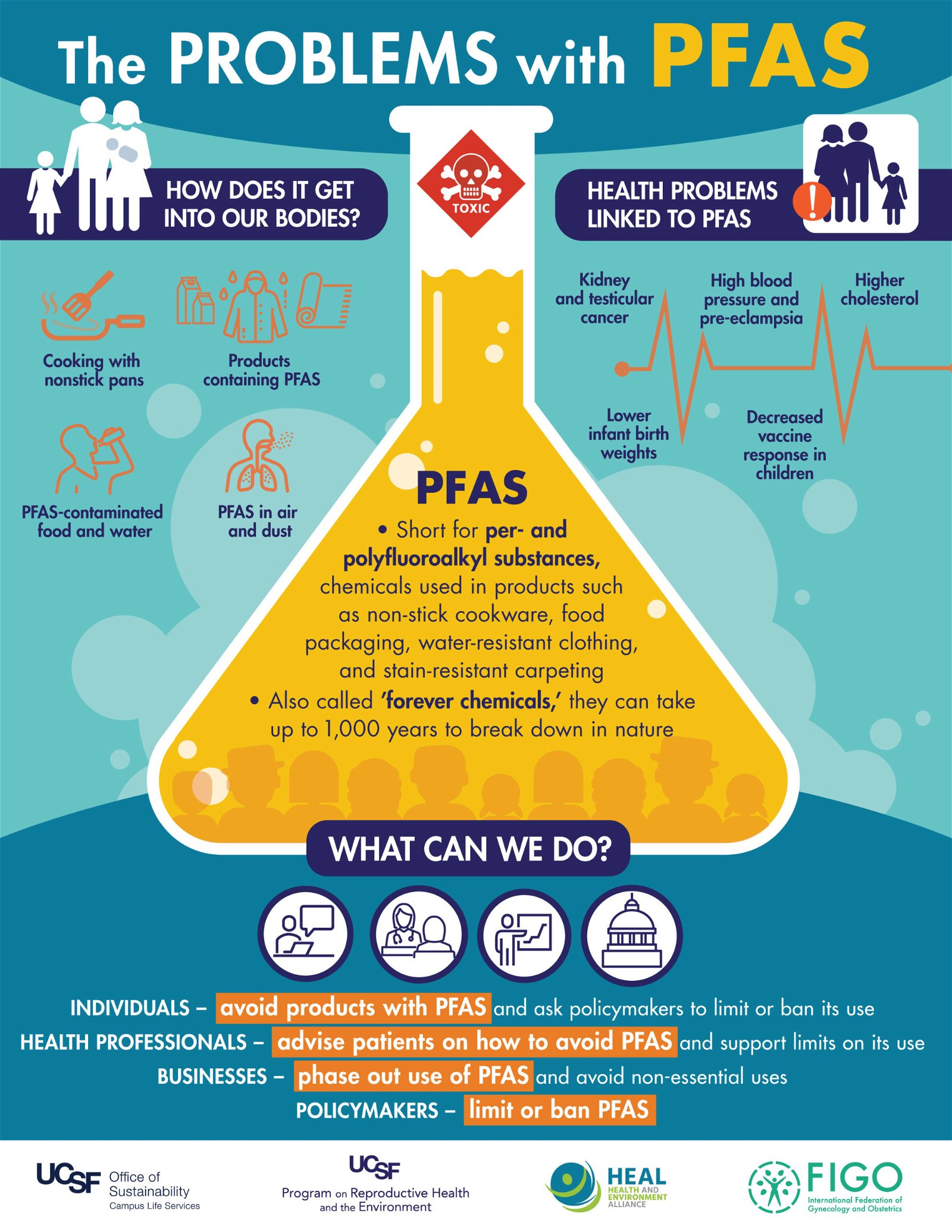
- Per- and Polyfluoroalkyl Substances (PFAs) are man-made chemicals used to make products grease-proof, water-proof, stick-proof, and stain-resistant.
- PFAs used to make nonstick cookware, water-repellent clothing, stain-resistant fabrics, cosmetics, firefighting forms, etc.
- They can migrate to the soil, water, and air during their production and use.
- They are called forever chemicals because they do not break down easily and accumulate in the environment and in living organisms.
Harmful Effects of PFAs
- PFAs cause health issues like cancer, thyroid disorders, infertility, and developmental problems.
- They can interfere with body hormones and increase cholesterol levels.
- Long-term low-level exposure to PFAs can make it difficult for humans to build antibodies after being vaccinated against various diseases.
{GS3 – IE – Banking} Urban Cooperative Banks (UCBs)
- Context (TH I LM): RBI Governer stressed Urban Cooperative Banks (UCBs) to enhance their governance practices, focusing on risk management, compliance, and internal audit.
- He highlighted the important aspects that UCBs are required to focus on:
- Forming professional management boards
- Board member diversity and tenure, transparent
- Participatory board discussions
- Board’s involvement in upholding rigorous credit risk management
- Follow-up of large NPA borrowers
Urban Cooperative Banks (UCBs)
- UCBs are financial institutions that are registered as cooperative societies under the provision of either the State Cooperative Societies Act or the Multi-State Cooperative Societies Act.
- They provide banking services to urban and semi-urban areas, especially to low-income groups, small businesses, and self-employed people.

Bank’s Regulation in India
| Type of Bank | Regulator |
| Commercial (SBI, Axis) | RBI |
| Coop (Single State: Rural) | RBI + State Govt (dual regulation) |
| Coop (Single State: Urban) | RBI Only |
| Coop (Multi-State Cooperative) | RBI Only |
| Coop: Primary Agricultural Credit Societies (“PACS”) | State Govt |
UCBs Categorisation
- RBI based on the cooperativeness of the banks and availability of capital, had categorized UCBs into four tiers for regulatory purposes.
- RBI has also issued different regulatory guidelines for each tier to ensure financial stability and customer protection.
| Tier | Net Worth Requirement (Rs.) |
| Tier 1 | < 25 crore |
| Tier 2 | 25 crore or more but less than 100 crore |
| Tier 3 | 100 crore or more but less than 500 crore |
| Tier 4 | 500 crore or more |
{GS3 – IE – Budget} Fiscal Deficit
- Context (TH): The Centre’s fiscal deficit in the first four months of 2023-24 (Q1FY24) touched 33.9% of the full-year target.
- In the Union Budget, the GoI projected to bring down the fiscal deficit to 5.9% of the GDP in FY24.
- The fiscal deficit stood at 6.40% of the GDP in 2022-23 against the earlier estimate of 6.71%.
Budget

- Revenue Account: It includes money earned (Receipt) and spent (Expenditure) without changing liabilities and assets.
- Capital Account: It includes money earned (Receipt) and spent (Expenditure) which changes the liabilities or assets.
- Total Receipt (TR): It includes revenue receipt and capital receipt.
- Total Expenditure (TE): It includes revenue expenditure and capital expenditure.
- Budget Deficit (BD): It is the difference between total expenditure and total receipt.
BD = TE – TR
- Fiscal Deficit (FD): It is the difference between total expenditure and total receipt excluding borrowing.
FD = TE – TR (except borrowing)
- If the budget deficit is zero, then the fiscal deficit is equal to borrowing.
Primary Deficit
|
{GS3 – IE – National Income} Gross Domestic Product
- Context (TH): India’s Real GDP or GDP at constant prices (2011-12) grew at 7.8% in the April-June quarter of the current fiscal (2023-2024) (Q1FY24).
- In the April-June quarter:
- Agriculture sector grew at 3.5%.
- Manufacturing grew at 4.7%
- Services sector grew at 9.2%.
- India’s Nominal GDP or GDP at current prices in Q1FY24 showed a growth rate of 8%.
Gross Domestic Product (GDP)
- It is the total final value of goods and services produced within the domestic territory of a country in a specified period (financial year).
- GDP can be calculated by three methods:
- Income method
- Expenditure method
- Product method (Value Added method)
- The National Statistical Office (NSO) calculates the GDP by both value-added and expenditure methods but publishes only GDP by value-added method with a delay of two months.
- In the latest series (from 2015):
- The base year was shifted to 2011-12 from the earlier 2004-05.
- GVA at basic prices became the primary measure of output across the economy’s different sectors.
|
Nominal and Real GDP
- Nominal GDP: GDP is measured at current prices.
- Real GDP: GDP is measured at constant prices (2011-12).
Gross Value Added (GVA)
- GVA is the value of output minus the value of intermediate consumption.
- It measures the contribution to GDP made by an individual sector.
Relationship between GVA and GDP
- GVA of various sectors is added to net taxes (taxes-subsidies) on products it amounts to GDP.
GDPMP = GVABP + (Net indirect taxes – Product subsidies)
(GDPMP: GDP at market price; GVABP: GVA at basic price)
{GS3 – IE – Securities} OCCRP’s Adani Report
- Context (TH I IE ): In OCCRP report, the Adani Group was alleged of using offshore funds to manipulate its stock prices and benefit from dubious dealings.

Organized Crime and Corruption Reporting Project (OCCRP)
|
- The report also claimed that the Adani Group was funded by interests linked to George Soros, a billionaire philanthropist and investor.
- The Adani Group denied the allegations and called them recycled and motivated.
- It said that the report was a bid to revive the Hindenburg report, which had made similar accusations.
For more info: {GS3 – IE – Securities – 2023/08/30} Hindenburg Report And ED Investigation
{GS3 – S&T – BioTech} Gene-Edited Mustard
- Context (IE): Indian scientists have developed the first ever low-pungent mustard that is pest and disease-resistant.
Glucosinolates: The Compund Making Mustards Pungent
- Mustard seeds have high levels of glucosinolates (a group of sulphur and nitrogen-containing compounds) which makes their oil and meal pungent.
- Glucosinolates is found in cruciferous vegetables, such as broccoli, cabbage, cauliflower, etc.
|
Benefits of Glucosinolates
- Health benefits: Glucosinolates prevent cancer, detoxify the body, and improve heart health. It also has anti-inflammatory and antioxidant properties.
- Protection from pests: It protects the plants against invading pests, pathogens, and termites.
Problems from Glucosinolates
- Limits market: The pungent odour limits the mustard oil’s acceptability among consumers.
- Health problems: It causes thyroid disorder, goiter, and kidney stone problems.
- It also causes internal organ abnormalities in livestock.
Gene Editing to Lower Glucosinolates
- The lowering of glucosinolates as seed level is desirable for reducing pungency. But its lowering in whole plant is not desirable as it weakens plants defence system.
- Gene editing helped in creating a mustard variety where glucosinolates are reduced only at the seed level, while other plant parts have higher glucosinolate.
- Cas9 enzyme, derived from Streptococcus pyogenes bacteria, was used for gene editing.
- Varuna, a high-yielding Indian mustard variety was genetically edited to get the new variety.
Gene-Edited Crops and Genetic Modified Crops
| Gene-Edited (GE) Crops | Genetic Modified (GM) Crops |
| In GE crops, existing genes are modified to achieve desirable traits | In GM crops, foreign genes are introduced to achieve desirable traits |
| Transgene-free or non GMO | Non transgene-free (i.e., foreign genes present) |
| Not under stringent environmental release regulations in India | Under stringent environmental release regulations in India |
| Low chances of unintended effects on plants | High chances of unintended effects on plants |
| Acceptability more among customers | Acceptability less among customers |
GM Crops Environmental Release Process
- GM crops have stringent environmental release regulations, not just for commercial cultivation but even for field trials and seed production.
- Clearance is given by the Genetic Engineering Appraisal Committee (GEAC) under the MoEFCC.
- But the GEAC’s green signal is not binding on the GoI, which gives the final nod.
GE Crops Environmental Release Process
- MoEFCC exempted GE plants from the requirement of GEAC approval for open field trials leading to commercial release.
- Such clearance is now necessary only at the level of an Institutional Bio-safety Committee (IBSC), comprising scientists from the institutions engaged in the GE crop development and from the DBT.
Genetic Engineering Appraisal Committee (GEAC)
|
Economic Importance of the GE Mustard
- India is a huge importer of edible oils.
- So, there is a dire need to boost domestic oilseeds production through focused breeding to improve crop yields, pest and disease resistance, and product quality.
Mustard
Mustard Cultivation in India
|
{Prelims – S&T – Defence} Mahendragiri Frigate
- Context (HT): Mahendragiri Frigate is the latest warship of the Indian Navy, which launched on 1st September at the Mazagon Dock Shipbuilders Limited, Mumbai.
- It is the seventh and last stealth frigate of Project 17A Frigates.
- It is named after a mountain peak in Eastern Ghats located in Odisha.
Nilgiri-Class Frigates (Project 17A)
- Project 17A is a series of stealth guided-missile frigates.
- They are built by Mazagon Dock Shipbuilders and Garden Reach Shipbuilders and Engineers.
- Project 17A ships have been designed in-house by the Indian Navy’s Warship Design Bureau.
- Complying with AatmaNirbharta, a substantial 75% of the orders for equipment and systems are from indigenous firms.
Ships in the Nilgiri-Class Frigates
| Name | Launched in |
| Nilgiri | September, 2019 |
| Himgiri | December, 2020 |
|
Taragiri |
September, 2022 |
|
Udaygiri |
May, 2022 |
|
Dunagiri |
July, 2022 |
|
Vindhyagiri |
August 17, 2023 |
|
Mahendragiri |
September 1,2023 |




![PMF IAS Environment for UPSC 2022-23 [paperback] PMF IAS [Nov 30, 2021]…](https://pmfias.b-cdn.net/wp-content/uploads/2024/04/pmfiasenvironmentforupsc2022-23paperbackpmfiasnov302021.jpg)
